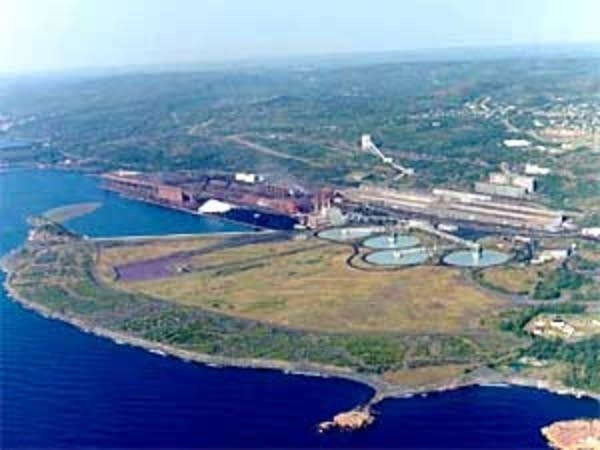Concern rises over fibers in Silver Bay air

A short history might be in order.
Forty years ago, at the beginning of taconite mining in Minnesota, Reserve Mining opened the first taconite plant. It dumped its tailings, or waste rock, directly in Lake Superior.

A few years later, scientists discovered microscopic fibers from the tailings in the drinking water in Duluth and other towns along the north shore. The fibers were similar to asbestos, a known cancer agent.
The newly formed Environmental Protection Agency tried to get Reserve to dump its waste on land.
Create a More Connected Minnesota
MPR News is your trusted resource for the news you need. With your support, MPR News brings accessible, courageous journalism and authentic conversation to everyone - free of paywalls and barriers. Your gift makes a difference.
A ground-breaking federal court case forced the company to move to on-land disposal. The court also required the state to monitor the air in Silver Bay and in downtown St. Paul. It said the Silver Bay air should not have more of those fibers than the St. Paul air.
Brad Moore, Commissioner of the Minnesota Pollution Control Agency, takes up the story.
"A number of years passed, basically several decades, and the monitoring wasn't done for quite a few years and I'm not completely sure why that is," Moore says. "But I know that when I started as a commissioner here in August, the monitoring had been going on (again) for some time." Here's the good news.

"The fiber levels, both in Silver Bay and in St Paul, are lower than the amount of fibers in the 1970s," Moore says. But the bad news, for people in Silver Bay, is the fiber count there is about three times higher than in St. Paul. While these fibers have not been identified as a cancer agent, scientists are still unsure. And that worries local residents.
Most of the fibers in St. Paul probably come from asbestos in brake linings, and most of the fragments in Silver Bay come from taconite ore. At one point St. Paul had more fragments than Silver Bay, but better brake technologies have made for a steady improvement in St. Paul.
About 10 years ago, the MPCA decided it should try to come up with a health-based standard instead of just comparing the two cities.
MPCA Mining Sector Director Ann Foss says it would be more useful.
"What the comparison city doesn't answer for you is what, if any, health impacts there are on the Silver Bay residents," she says. "And that's what we hope to answer with the health-based standard -- are we being protective of the citizens in Silver Bay or not?"
Four years ago, the agency helped organize an international symposium to bring together the best research on the health effects of mineral fibers. The plan was to base a health standard on the papers presented at the symposium.
But so far there's been no report from that gathering. The scientist in charge is still preparing the papers for publication.
Meanwhile, the current owner of the old Reserve mine, NorthShore Mining, applied for a permit to restart a furnace in Silver Bay. That's when the MPCA started monitoring the air in St. Paul again.
Now that it knows how much cleaner the air in St. Paul is, the MPCA says NorthShore Mining is violating its permit.
Cleveland-Cliffs owns NorthShore. Spokeswoman LaTisha Gietzen says the plant long since cleaned up its air emissions, and that's why the MPCA stopped measuring the air in St. Paul.
"The control city requirement was something that was fashioned by the court 30 years ago," she says. "It's obsolete. At this point we've done, and meet, the Maximum Achievable Control Technology established by the federal government."
Meanwhile, the group that takes credit for pushing the MPCA to check St. Paul's air again isn't satisfied either. Lee Lind is president of Save Lake Superior Association -- a group that started 40 years ago to fight Reserve Mining's dumping in the lake. He says state agencies have been slow to act.
"They've spent 30 years doing nothing," he says. "Then all of a sudden they're coming up with new data that shows people are dying, these new people getting sick. That's the crime, that's the shame."
The Minnesota Department of Health is working with an EPA scientist who helped identify the mineral fragments in Duluth's water 30 years ago, to come up with a standard that can predict what levels of exposure to the fibers present what levels of risk. They expect it to take a year and a half.
